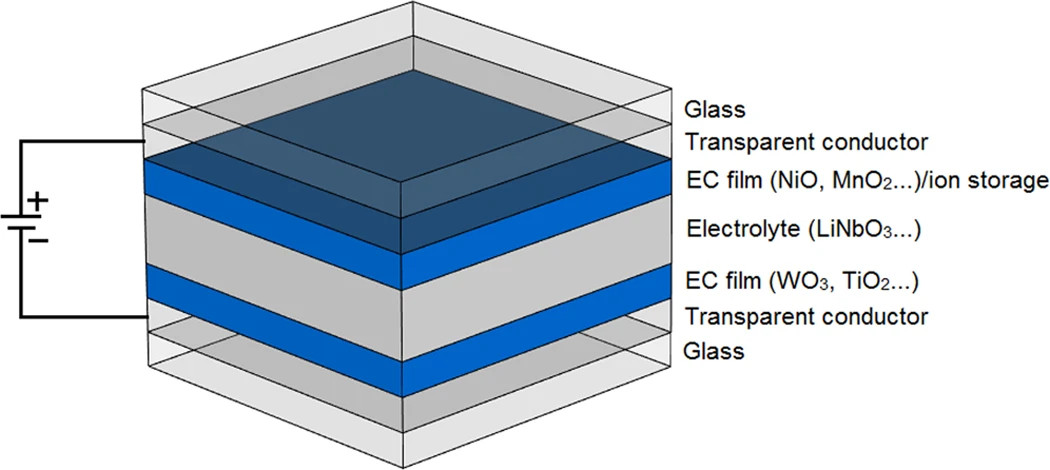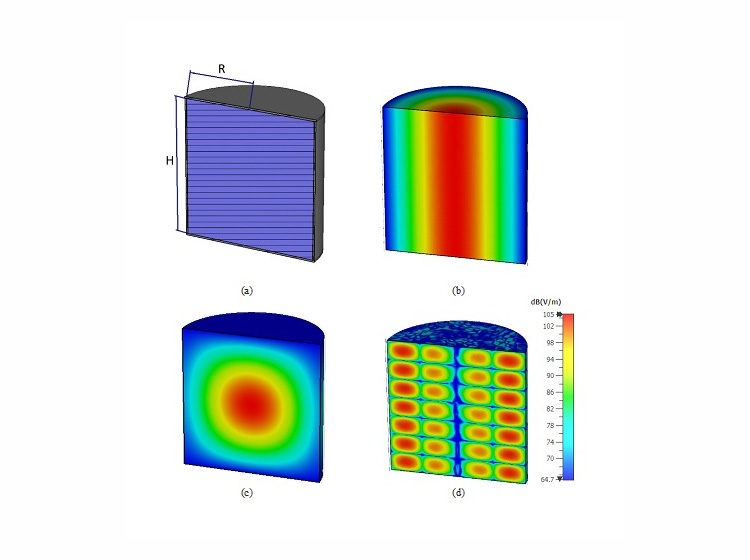The property of a change, evocation or bleaching of colour influenced by either an electron-transfer (redox) process by a sufficient electrochemical potential, referred to as Electro-Chromism (EC), is exhibited by several organic and organic materials. The physical structure of devices exhibiting this phenomenon is usually multi-layered, with each layer deposited sequentially on top of the previous layer, such as the one shown in Fig. 1 below.
Glass is normally used as the substrate on which the rest of the layers are deposited, as it provides structural stability and is permeable to light; however, other structurally stable substrates can also be used. The optically transparent conductors usually come in the form of Indium Tin Oxide (ITO) and need to be good electrical conductors. The EC film for inorganic based EC materials at the cathode end is usually tungsten oxide (WO3), however, a variety of other transition metal oxides can be employed (TiO2, MoO3, Ta2O5, Nb2O5) depending of the desired colour of the “ON” or actuated state. It is this layer that contributes to colour modulation based on ion and electron injection and, hence, it needs to be a good electrical conductor. The ion conductor or electrolyte layer serves as a tank of available ions to be injected into the EC film(s). The requirement imposed on this layer is that it needs to display different ion and electron conductivities, typically for ions and for electrons. The ion storage layer, if present, should display complimentary electrochromic characteristics to the cathodic EC film. Typical transition metal oxides used for this layer are NiO, Cr2O3, MnO2, FeO2, CoO2, RhO2, and IrO2.
EC materials have been traditionally used in applications related to display technologies. In this case, EC based displays are usually actuated by the application of low dc bias voltages, changing their appearance from transparent to opaque. Even though a variety of studies have been reported on the modulation of optical characteristics of EC materials, no serious studies prior to the work presented in this paper, have been reported on the use of EC materials as high frequency tuneable dielectrics. As such, this paper reports on the discovery of tuneable high frequency dielectric characteristics of EC materials. For the purpose of the study a standard EC composition commonly used in display technology – WO3/LiNbO3/NiO. Our measured results show that the examined EC structure exhibits a dielectric tunability of about 10% in the frequency range up to 10 GHz, which is already in-line with the extent of tunability of other, more mature bulk-tuneable technologies, such as Liquid Crystals (LCs).
Our study further indicates that a possibility exists that the absolute values of the dielectric permittivities and their tuning ranges can be tailored by an appropriate choice of the chromic layers and the electrolyte. This offers possibilities for the creation of a family of new devices, capable of exploiting this effect.

Fig. 1 Structure of standard EC cell



Leave a Reply